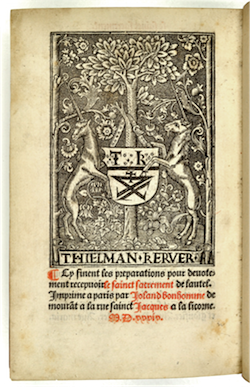WOMEN IN PRINTING HISTORY PART 1:Female Incunabula Printers
/WOMEN IN PRINTING HISTORY PART 1:
Female Incunabula Printers
From the beginning of printing with movable type in Europe, women were employed in the industry. In fifteenth and sixteenth-century Italy, there were more than fifteen female religious houses that were sites of book production. Almost two-thirds of these were located in Florence.
One such location was the Convent of San Jacopo di Ripoli in Florence. It was here that nuns produced liturgical manuscripts throughout the Middle Ages and Renaissance.In the 1470s, a printing press was established at their house. This was only the second printing press to be located in Florence and the first to produce a substantial body of work. According to the records of the San Jacopo di Ripoli
print shop, much of the convent’s typesetting was done by a nun, Suor (Sister) Marietta. During the nine years the convent was in business, this print shop printed over 100 secular and religious titles (12,000 volumes) as well as pamphlets and broadsides.
Further north and a few years later, another woman was making her mark in the printing industry.
In 1470, Johann Heynlin and Guillaume Fichet established the first printing press in Paris. They first set up shop at the Sorbonne and then moved to Rue St. Jacques. Within three years, two of their apprentices set up a competing printing press on the same street. Due to the proximity of the Sorbonne, many other booksellers and printers also set up shop here.
One such printer and bookseller was Pasquier Bonhomme. Yolande Bonhomme, his daughter, had various responsibilities within her father’s shop. In due time, she married a highly successful printer, Thielmann Kerver. When he died in 1522, Yolande assumed control of his print shop located on the Rue St. Jacques in Paris. She specialized in illustrated Books of Hours (private prayer books for lay worshippers). In 1526, she became the first woman to print an edition of the Bible. At the time of her death in 1557, her press was one of the most successful and respected in Paris.
In the colophon on the final page of a French devotional book printed by Bonhomme (pictured here), she wrote, “Imprime a paris par Yoland bonhomme de mourat a la rue saint Jacques a la licorne.” Roughly translated, it says, “Printed in Paris by Yoland Bonhomme de Mourat at Rue Saint Jacques at the sign of the unicorn (the company’s logo).
To learn more about the #GirlsWhoPrint and #PrintHerStoryMonth initiative visit GirlsWhoPrint.net



